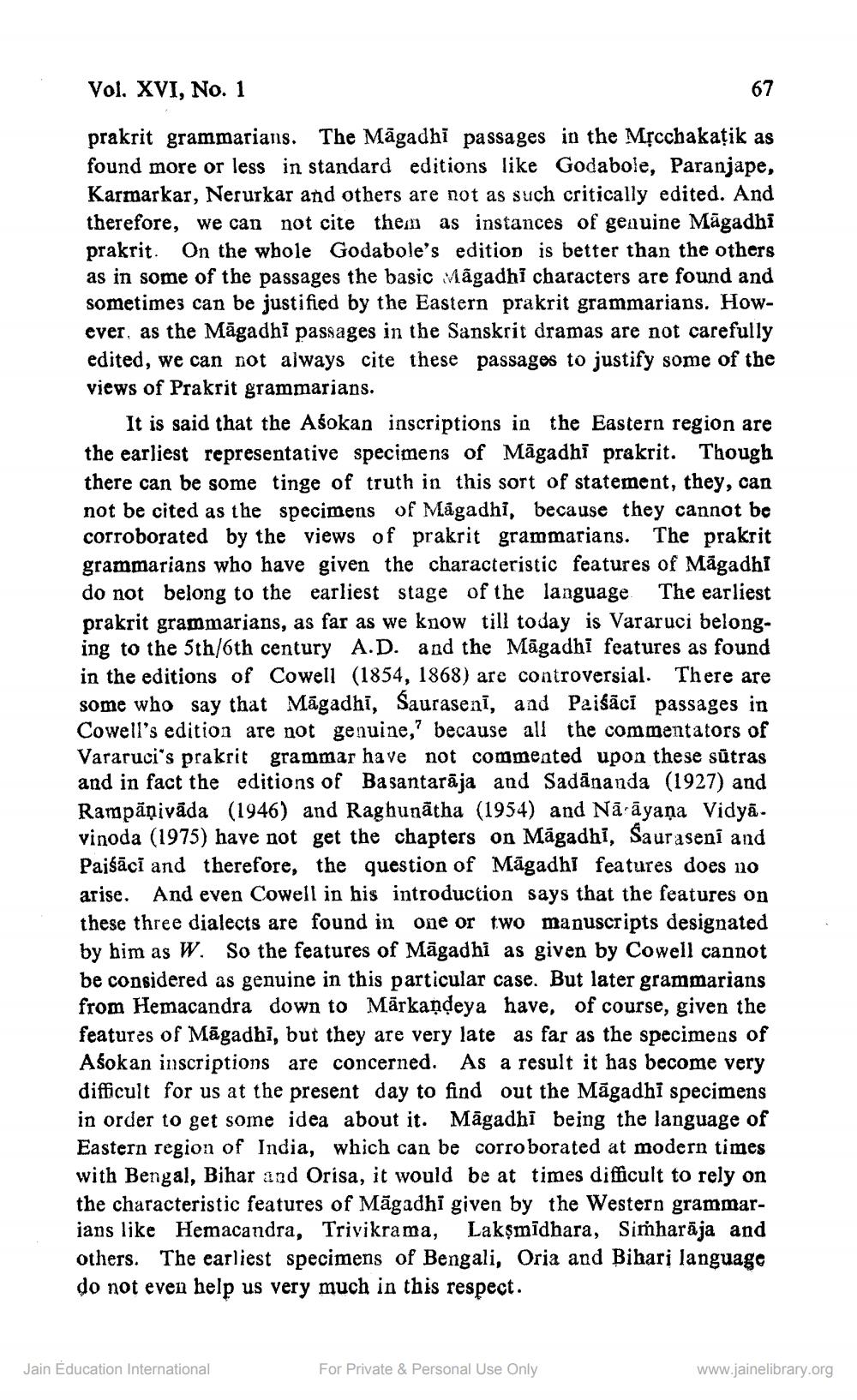________________
Vol. XVI, No. 1
67
prakrit grammarians. The Magadhi passages in the Mṛcchakatik as found more or less in standard editions like Godabole, Paranjape, Karmarkar, Nerurkar and others are not as such critically edited. And therefore, we can not cite them as instances of genuine Māgadhi prakrit. On the whole Godabole's edition is better than the others as in some of the passages the basic Magadhi characters are found and sometimes can be justified by the Eastern prakrit grammarians. However as the Magadhī passages in the Sanskrit dramas are not carefully edited, we can not always cite these passages to justify some of the views of Prakrit grammarians.
It is said that the Aśokan inscriptions in the Eastern region are the earliest representative specimens of Magadhī prakrit. Though there can be some tinge of truth in this sort of statement, they, can not be cited as the specimens of Magadhi, because they cannot be corroborated by the views of prakrit grammarians. The prakrit grammarians who have given the characteristic features of Magadhi do not belong to the earliest stage of the language. The earliest prakrit grammarians, as far as we know till today is Vararuci belonging to the 5th/6th century A.D. and the Magadhi features as found in the editions of Cowell (1854, 1868) are controversial. There are some who say that Magadhi, Sauraseni, and Paiśācī passages in Cowell's edition are not genuine, because all the commentators of Vararuci's prakrit grammar have not commented upon these sutras and in fact the editions of Basantaraja and Sadananda (1927) and Rampāṇivada (1946) and Raghunatha (1954) and Nārāyaṇa Vidyavinoda (1975) have not get the chapters on Magadhi, Sauraseni and Paiśācī and therefore, the question of Magadhi features does no arise. And even Cowell in his introduction says that the features on these three dialects are found in one or two manuscripts designated by him as W. So the features of Māgadhi as given by Cowell cannot be considered as genuine in this particular case. But later grammarians from Hemacandra down to Märkandeya have, of course, given the features of Magadhi, but they are very late as far as the specimens of Asokan inscriptions are concerned. As a result it has become very difficult for us at the present day to find out the Magadhi specimens in order to get some idea about it. Magadhi being the language of Eastern region of India, which can be corroborated at modern times with Bengal, Bihar and Orisa, it would be at times difficult to rely on the characteristic features of Magadhi given by the Western grammarians like Hemacandra, Trivikrama, Lakṣmidhara, Simharaja and others. The earliest specimens of Bengali, Oria and Bihari language do not even help us very much in this respect.
Jain Education International
For Private & Personal Use Only
www.jainelibrary.org




